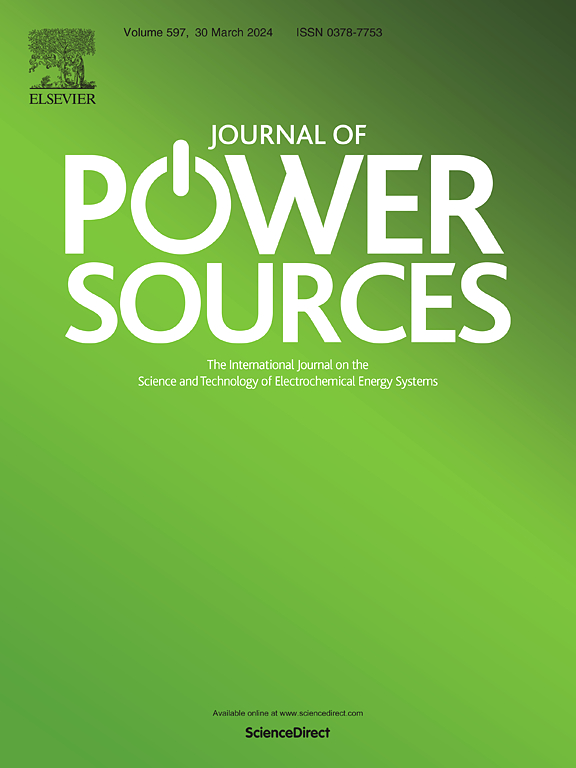Lamellar lyotropic liquid crystals enabled beyond-liquid electrolytes for advanced Zn-ion batteries
IF 8.1
2区 工程技术
Q1 CHEMISTRY, PHYSICAL
引用次数: 0
Abstract
Developing solid-state aqueous electrolytes combining liquid-like conducting performance, wide voltage windows, and anti-dendrite growth are satisfactory for efficient and durable Zn-ion batteries (ZIBs). Herein lamellar lyotropic liquid crystals (LLCs) are designed and prepared as solid-state electrolytes with comprehensive performance overwhelming to corresponding aqueous liquid electrolytes for ZIBs. The lamellar LLCs are simply prepared by nano-segregation of amphiphilic sodium dodecyl sulfate (SDS) in 2 M ZnSO4 aqueous solutions. SDS shows good compatibility in forming lamellar LLCs even with a high content of 500 wt% ZnSO4 solutions. The lamellar assembly constructs broadened liquid conducting pathways for efficient Zn-ion transport, which boosts ion conductivity of the lamellar electrolytes surpassing corresponding ZnSO4 solutions. Also, the lamellar nanostructures of LLC electrolytes enable higher voltage windows (2.5 V) and anti-dendrite growth performance. The lamellar electrolytes show superior energy conversion efficiency and durability comparing to the ZnSO4 solution electrolytes in Zn/V2O5 based ZIBs, and possess robust viscoelasticity and interfacial contact for flexible ZIB applications to rival commonly-applied hydrogel electrolytes. The work here demonstrates a new branch for developing aqueous solid-state electrolytes with beyond-liquid performance to supersede traditional liquid electrolytes for efficient and durable ZIBs.

求助全文
约1分钟内获得全文
求助全文
来源期刊

Journal of Power Sources
工程技术-电化学
CiteScore
16.40
自引率
6.50%
发文量
1249
审稿时长
36 days
期刊介绍:
The Journal of Power Sources is a publication catering to researchers and technologists interested in various aspects of the science, technology, and applications of electrochemical power sources. It covers original research and reviews on primary and secondary batteries, fuel cells, supercapacitors, and photo-electrochemical cells.
Topics considered include the research, development and applications of nanomaterials and novel componentry for these devices. Examples of applications of these electrochemical power sources include:
• Portable electronics
• Electric and Hybrid Electric Vehicles
• Uninterruptible Power Supply (UPS) systems
• Storage of renewable energy
• Satellites and deep space probes
• Boats and ships, drones and aircrafts
• Wearable energy storage systems
 求助内容:
求助内容: 应助结果提醒方式:
应助结果提醒方式:


